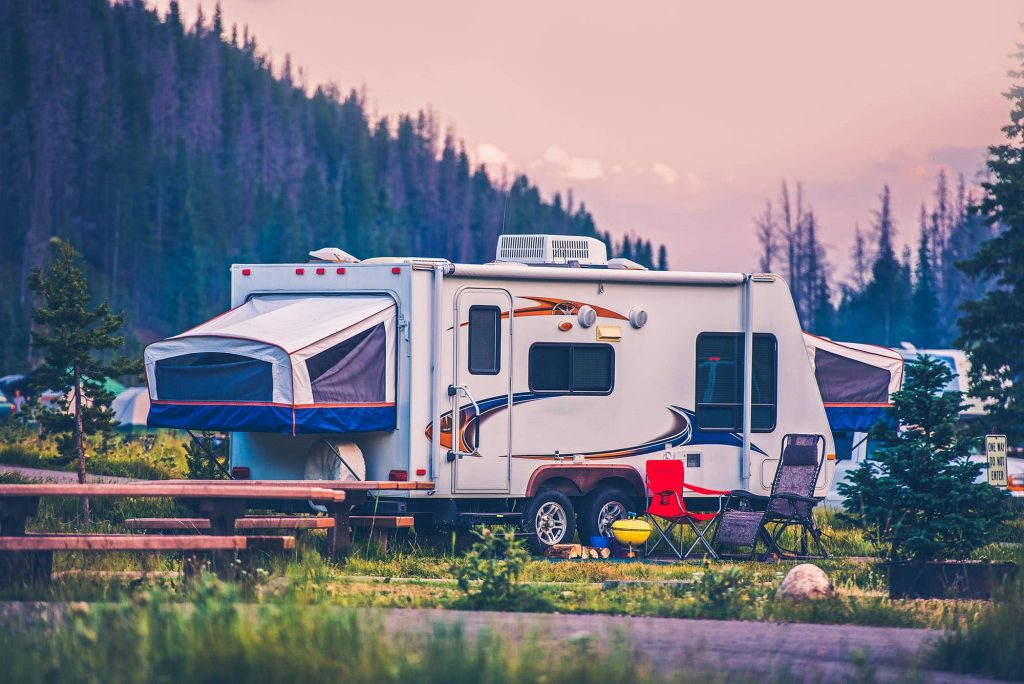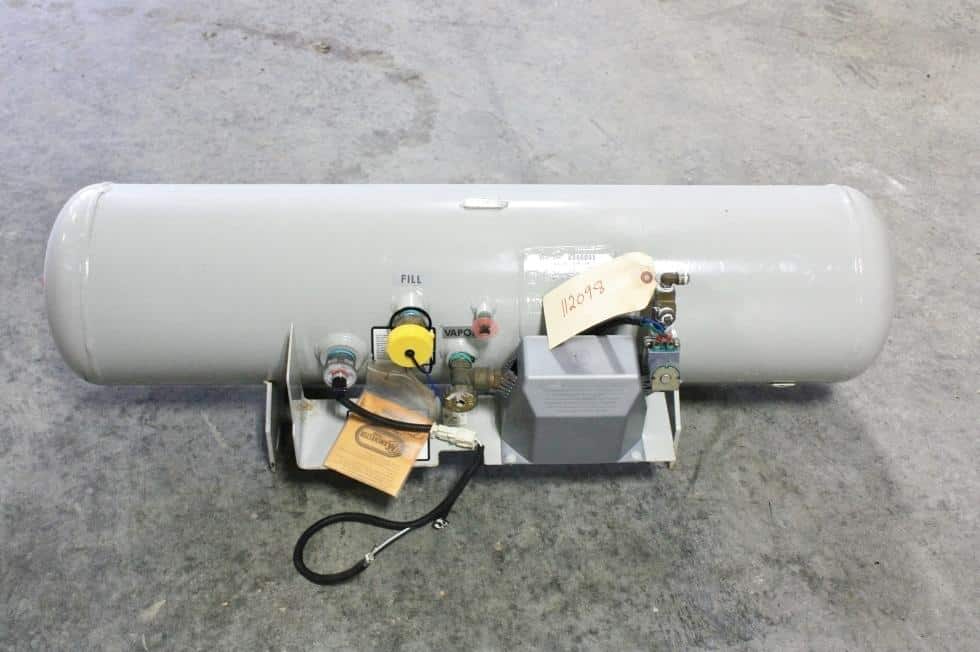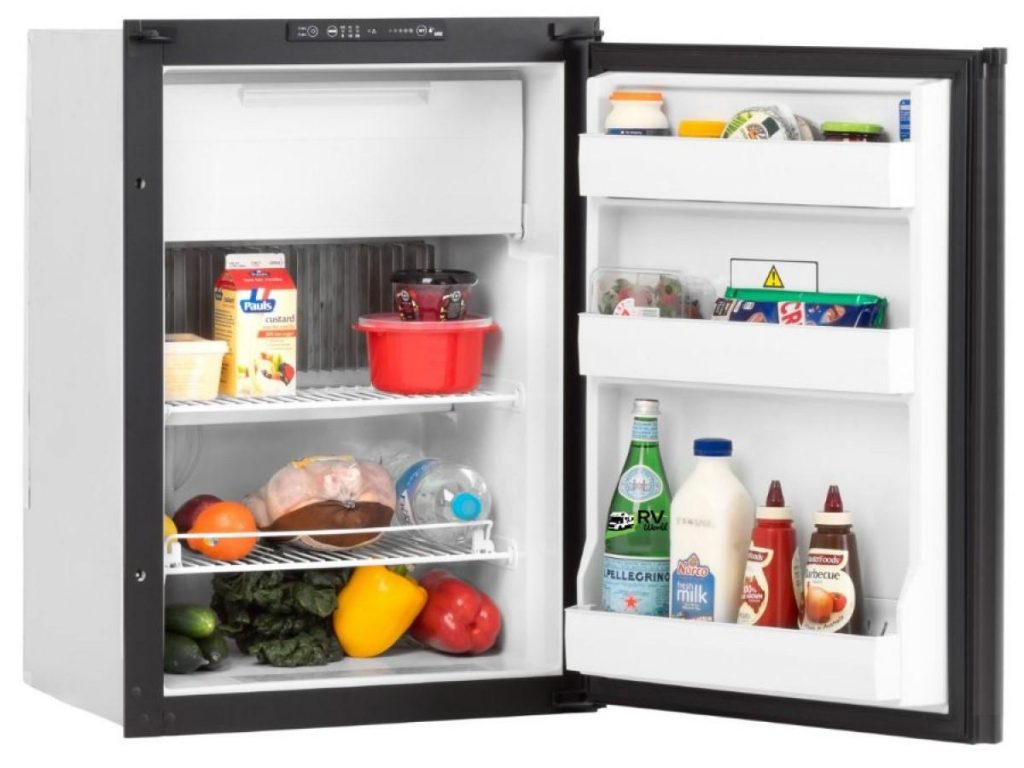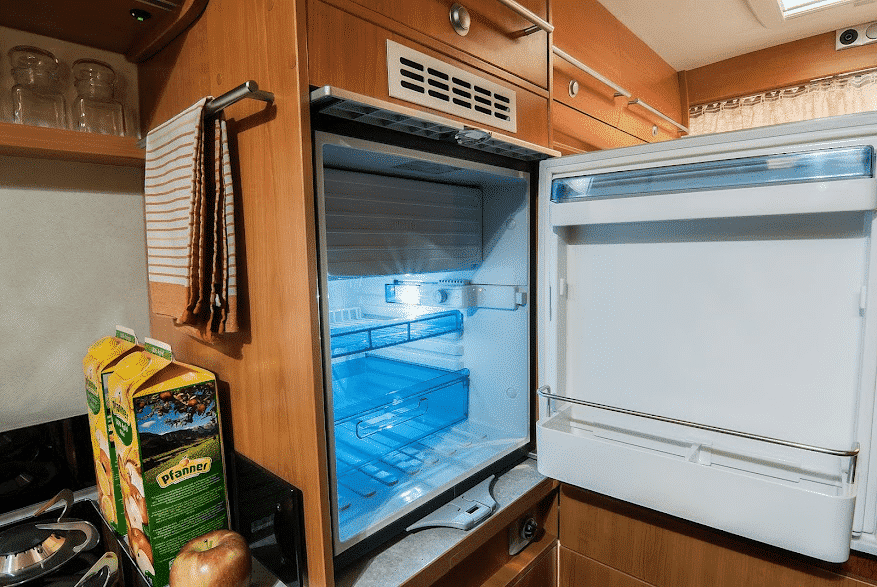Life on the roads means you have to sacrifice lots of comforts you used to get in a traditional home. You cannot bring that hot tub or the full-size kitchen cabinet with. But RV life still offers some creature comforts including a refrigerator, which could be big or small depending on the size of the RV. A real problem is the fridge runs warm when you are driving the vehicle. How to keep RV fridge cold while driving?
Running the fridge when you are on a campsite is simple. Plug it into a compatible power source and it will run automatically. But you will need a stable power source when on the road, which is a struggle because a refrigerator needs plenty of electrical power.

Contents
How to Keep RV Fridge Cold while Driving
You will need to arrange for a power source for the refrigerator when on the road. There are three types of power sources that you can use in an RV:
- Propane tank
- 120V AC
- 12V DC
Let’s see which type is safer and more reliable.
Propane Tank: Budget-friendly but Risky
Most people will argue against using a propane tank in the RV mainly because of its high flammability. It’s a great power source for the refrigerator, furnace, and water heater, no doubt about that. But keeping it in a moving vehicle is highly risky because it catches fire easily.

A loose connection can leak gas if the lines detach after the vehicle bumping into something or making a sharp turn. As this gas is volatile, just a tiny spark can start a fire or explosion. If you are saved from the fire, by any chance, you are still susceptible to various physical discomforts such as breathing difficulty, headache, and even seizures just by inhaling the gas.
If you decide running the fridge with propane against all the risks, it’s necessary to take a few precautions to avoid any possible danger. For example, keep it in a place where it’ll not tumble every time after the vehicle hits a pothole. Do regular inspection to catch any damage or loose connections before time.
If you decide to go on with a propane power source, be careful when driving through a tunnel or around a fuel station. By law, you are bound to keep the tank off at these places.
Generators on the Go (120V AC)
A generator is a safer option for this problem of how to keep RV fridge cold while driving. Some RVs have a built-in generator and you can always buy a unit if your motorhome does not come up with one.
A generator is a more expensive option than a propane tank, but it’s undoubtedly safer. It provides 120V AC power, but remember to fuel it up before a trip because it will shut off when the fuel falls below a quarter tank.
Some generators run on propane. Be careful in that case and keep the unit switched off near fuel stations and in tunnels.
Some bridges and roads have restrictions against propane. Avoid those routes when using a propane tank or a propane generator. There will be road signs in those areas, so you will know which path to avoid.
Three-Way Refrigerators (12V DC)
A three-way RV fridge is the best option for keeping the fridge running on the road. These are absorption refrigerators compatible with a wide range of power sources including AC power, DC power, LP gas, house batteries, shore power, and more.

All you have to do is switching the fridge to 12V DC. This means that the fridge will draw power from the vehicle’s battery. Since the battery gets automatically recharged when the engine runs, you won’t be left stranded with a drained battery. However, remember to unplug the fridge when you are parked somewhere, either for taking a snack break or filling up the fuel tank.
The most disappointing thing is the unavailability of three-way fridges. These fridges are small, which makes sense because otherwise, you cannot power them up through a 12V DC connection. But RVs these days are huge and the fridges in them have also grown in size. Three-way fridges are mainly found in old motorhomes and small campers.
Keeping RV Fridge Cold without a Power Source
You may don’t want to use a power source and that’s fine. A propane tank is risky, generators are expensive, and a three-way fridge is not very common. You might be thinking about how to keep RV fridge cold while driving without using a power source.
You’re in luck. There are several useful methods to keep the fridge cool for several hours, enough for you to go from one camping point to another.
Crank up the coldness before leaving.
The day before your trip, crank up the fridge’s coldness to the coldest setting and leave it like that overnight. So, when you unplug the fridge and start the journey, everything inside it will be icy cold, which is enough to keep the stuff cold for several hours.
Fill up all the gaps.
Before cranking up the coldness and keeping the ridge shut before the journey, fill up all the empty space inside the fridge. It will help the fridge retain its coldness. Using frosty treats like water bottles, drinks cans, ice cubes, or ice bags will be more useful in this case. Use proper leak-proof bottles or containers for storing these items or else there will be water inside a few hours after the unplugging.

Don’t open the fridge doors often.
Another good trick regarding how to keep RV fridge cold while driving. A refrigerator retains its coldness by creating a sealed environment. You release some of that coldness by opening the door, which lets in room temperature air and causes the loss of cold air and temperatures by several degrees.
